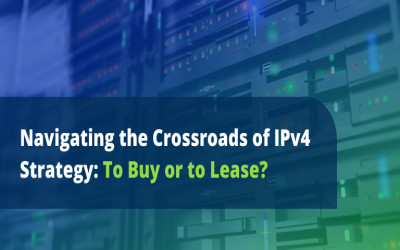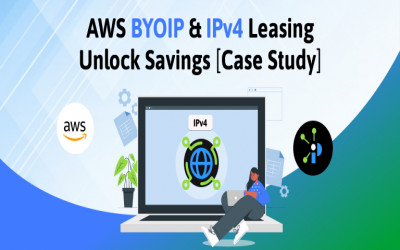The History & Evolution of IPv4 Address space
-
Posted at 2020-01-16 15:05:38

History of IPv4
Internet was born from a research network called ARPANET i.e. a computer network funded by the Advanced Research Projects Agency of the U.S. Department of Defense. On its first day of office in 1969, ARPANET operated across 4 hosts. Each host had a unique address for online communication.
The online addresses were identified using 8-bit numbers called the Network Control Protocol (NCP). ARPANET was thus, an 8-bit network. By 1981, it had evolved into a national network connecting 213 hosts across universities and research facilities. Soon, all kinds of networks emerged and so did the need to connect these heterogeneous networks into one big inclusive network. The idea was to maintain the heterogeneous nature of each network and also allow users to communicate across networks. To this end, the first half of the 1970s witnessed Robert Khan (DARPA) and Vint Cerf (NCP) work on a Transmission Control Program and publish their first paper in 1974.
It was implemented through 4 versions, wherein the 3rd version segregated itself into Transmission Control Protocol (TCP) and Internet Protocol (IP). By 1978, the very first draft of TCP/IP v4 was published. By 1981 it became a standard and on 1st January 1983 i.e. “flag day”, ARPANET retired NCP and adopted TCP/IP.
What is IPV4?
For programmers, IPv4 is a comprehensive program that can generate 4.3. Billion addresses using 32-bit numbers. On the other hand, a normal user would usually identify it as the IP Address of any device for example 192.298.0.1.
The fact is, IPv4, has persisted as the standard for IP addresses for over 3 decades. A simple description of the IPv4 system is given below:
1. It comprises of 32-bit numbers.
2. These 32-bit numbers are divided into 4 bytes separated by dots.
3. These bytes are identified under 2 components of the IP address i.e. the network and the node components.
4. The network component may be presumed as akin to a street number and the node component may be seen as an equivalent of the house number.
IPV4 classes
Initially, this distinction of components was achieved using ‘Class arrangements’ but the arrangement was deemed wasteful and discontinued. Surprisingly, the use of the terminology continued in the form of IPv4 Classes.
Today, these classes are a means to identify addresses based on size and volume in the following manner:
1. Class A = addresses that support a large number of nodes, wherein:
8 bits represent the network component and 24 bits represent the node component.
A Class A address always begins with 0 as its first bit, also known as the most significant bit or MSB, hence always in the range of 0 to 127.
They are meant for large organizations.
2. Class B = addresses which support a medium number of nodes wherein:
16 bits represent each of the network and node components.
A Class B address always begins with 1 as its first bit, also known as the most significant bit or MSB, hence always in the range of 128 to 191.
3. Class C= addresses that support a small number of nodes, wherein:
12 bits represent the network component and 4 bits represent the node component.
Initially, a Class C address began with 110 at its first 3 bits, but later it was redefined using the Classless Inter-Domain Routing (CIDR) and the aforesaid components were distinguished by the technique of subnetting.
They are meant for small organizations.
Use of IPv4 brokers
As mentioned above, The IPv4 was initially designed to generate 4.3 billion addresses. Today, the world population is 7.8 Billion people, growing by millions every year.
When it comes to Internet users, they have grown from 16 million in December 1995 to over 4.3 billion in 2019. Many users operate accounts on multiple IP addresses and the Internet of Things (IoT) assigns IP addresses to machines. Over the last two decades, experts have worried over the impending need to replace IPv4 and the world has already witnessed the growing use of IPV6 (128-bit address space).
Even after the introduction of IPv6, IPv4 remains resilient. 4 of the 5 Regional Internet Registries have already exhausted their pool of free addresses and the 5th has declared its first phase of the exhaustion process.
Moreover:
1. Certain addresses are Private i.e. those reserved for internal networks since they cannot be routed through the Internet
2. IP addresses with all 1s and all 0s in the node address are not permitted, limiting the possibilities to define addresses.
Taking all of the above observations in context, the demand for IPv4 outweighs the supply, IPv6 is yet to be the prevalent norm and such conditions result in the prevalence of brokers. Some argue that brokers raise costs, while some say that brokers save the client money and deserve their fee.
The fact remains, IPv4 brokers are in demand and they do provide address space in a dense market.


.png)
